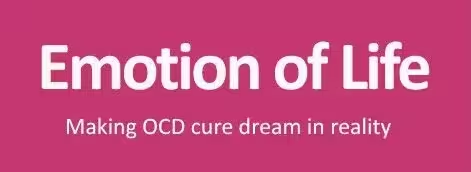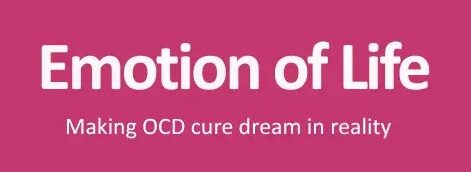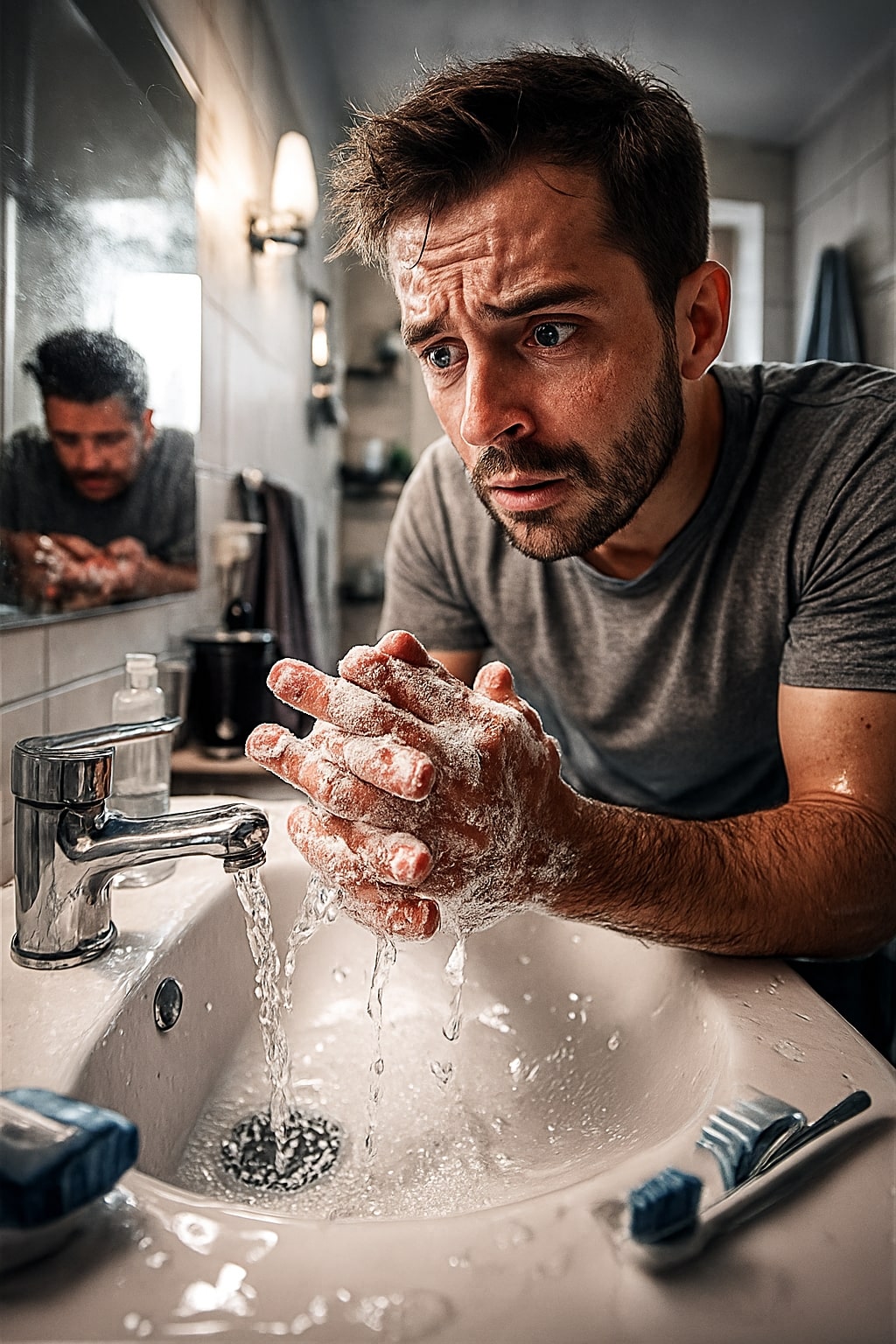Excessive handwashing and bathing OCD
Excessive handwashing and bathing OCD are types of obsessive-compulsive disorder characterized by an overwhelming need to wash, clean, or bathe that exceeds normal hygiene practices. Handwashing OCD manifests as rigid rituals related to hand cleanliness, such as washing for extended periods, using an excessive amount of soap, or believing that even a slight touch has caused contamination. Similarly, Excessive Bathing OCD involves taking long or frequent showers and baths, often accompanied by specific rituals regarding the way water interacts with the body, the number of times certain actions need to be repeated, or the cleaning of particular body areas. Both rituals are driven by intense anxiety: while washing may temporarily alleviate fear, it quickly resurfaces, creating a repetitive cycle.
Excessive Handwashing and Bathing OCD Symptoms frequently overlap and can severely impact daily life. You may find yourself avoiding outings due to contamination fears, missing work or school because of lengthy rituals, or feeling drained by the energy these behaviors require. Physically, you might experience sore, cracked hands or skin infections due to excessive washing; emotionally, you may struggle with feelings of shame, isolation, or significant frustration from the lack of control over your behavior. Many people report a fleeting sense of relief after washing, followed by guilt and an urgent urge to wash again. Recognizing the pattern is essential: obsessions manifest as intrusive, repetitive thoughts, such as “I touched something dirty” or “I could spread germs” while compulsions are the actions taken to alleviate the anxiety caused by these thoughts.
Signs and Symptoms of Excessive Handwashing and Bathing OCD
Excessive handwashing and bathing OCD typically begins with a valid concern, perhaps feeling unclean after a distressing incident, but it can escalate into an overwhelming fear. You might find yourself handwashing and bathing multiple times after feeling anxious or adhering to very particular handwashing or bathing rituals that must be precisely followed. In contrast to normal bathing, which is quick and concludes once you feel adequately clean, compulsive bathing persists even when you’re aware that it’s unnecessary and detrimental. Individuals with excessive handwashing and bathing OCD often structure their days around these activities, use showers as a coping mechanism for anxiety spikes, or feel they can’t sleep without a late-night bath. While this behavior may provide temporary relief from anxiety, it ultimately strengthens obsessive thoughts and perpetuates the cycle.
Causes of Excessive Handwashing and Bathing OCD
Psychological perspective: Excessive Handwashing and Bathing OCD, Washing rituals serve to alleviate unbearable doubt and fear. The individual adapts by associating washing with reduced anxiety, leading to this behavior becoming an automatic reaction. Over time, it establishes a conditioned response: when intrusive thoughts or discomfort arise, washing is enacted as a means of escape.
Social and cultural influences: Cultural messages about germs and cleanliness can heighten these anxieties, particularly when intertwined with personal experiences such as illness or trauma. Environmental influences: family members who are excessively focused on cleanliness can model and reinforce these washing habits in individuals of all ages.
Impact of Excessive Handwashing and Bathing OCD
The repercussions of excessive handwashing and bathing OCD go beyond merely losing time.
Physical Impact: Compulsive washing behaviours and the use of harsh soaps can lead to skin conditions like dermatitis, cracked skin, infections, and chronic pain.
Psychological Impact: The ongoing cycle of obsession and compulsion can drain emotional resources, contribute to depression and anxiety, and strain relationships when loved ones are unable to comprehend the behavior. Many individuals experience embarrassment and conceal their rituals, which fosters isolation and hinders them from seeking assistance. Over time, relying on washing to escape anxiety erodes one’s confidence in handling distress without rituals, making recovery appear more daunting than it is.
Triggers of for Excessive Handwashing and Bathing OCD
Triggers are diverse and individual in Excessive Handwashing and Bathing OCD For some, exposure to dirt or bodily fluids provokes anxiety; for others, news about disease outbreaks or reading about germs can act as triggers. Life stressors, hormonal fluctuations, or health issues can intensify obsessions and compulsions. Additionally, social triggers like criticism or jokes about cleanliness may lead to increased self-consciousness and more frequent rituals. Recognizing these personal triggers is a crucial step in therapy, as it allows individuals to devise strategies for confronting discomfort gradually rather than instinctively resorting to washing.
Distinction: OCD vs Healthy Hygiene
Healthy hygiene practices are adaptable, balanced, and practical, while compulsive washing behaviours are characterized by rigidity, anxiety, and ritualization. If you can forgo washing without overwhelming fear, your habits are likely normal. Conversely, if avoidance, excessive time spent, and distress are prevalent, you may be dealing with OCD. Another crucial distinction is motivation: healthy washing targets visible dirt or follows health guidelines, while compulsive washing seeks to mitigate internal feelings or worries that something terrible will occur if the ritual isn’t performed.
Treatment Excessive Handwashing and Bathing OCD
Effective treatment is primarily rooted in psychotherapy and a holistic recovery plan.
Cognitive Behavioral Therapy (CBT)
CBT focuses on helping you link thoughts, emotions, and actions. This often entails identifying intrusive thoughts that trigger the urge to wash and assessing their validity. Through CBT you might explore evidence for and against the belief that a single touch could lead to serious illness, learning to accept uncertainty rather than seeking complete assurance.
Exposure and Response Prevention (ERP)
ERP, a specialized form of CBT, is considered the gold standard. It encourages intentional exposure to feared situations (e.g., touching a doorknob) while resisting the urge to wash, teaching the brain that anxiety subsides without the ritual and that feared consequences rarely happen.
Acceptance and Commitment Therapy (ACT)
ACT enhances ERP by fostering acceptance of uncomfortable thoughts without acting on them. ACT emphasizes values and committed action: instead of washing to escape discomfort, you focus on living according to what truly matters, even in the presence of anxiety.
Wellness coaching
Wellness coaching supports recovery through lifestyle changes—better sleep, balanced nutrition, gentle exercise, and meaningful activities—which build resilience and reduce the intensity of obsessive thoughts. Recovery is seen as enriching life, not only minimizing behaviors.
Personality dynamics course-correction
Patterns like perfectionism, excessive responsibility, or intolerance of uncertainty can reinforce rituals. Therapy helps identify and gently correct these patterns—teaching “good enough” thinking, realistic responsibility, and adaptive coping strategies.
Cultivating healthy coping strategies
Practical strategies replace rituals: grounding exercises, paced breathing, cognitive checks, scheduling worry times, distraction techniques, and gradual exposure. For example, pausing to take ten deep breaths when the urge to wash arises and delaying the ritual gradually builds tolerance.
Improving emotional and mental well-being
Work on naming emotions, tolerating distress, and building self-compassion. Reducing harsh self-criticism and fostering supportive social connections (group therapy, peers) helps normalize experience and motivates recovery.
Self-help strategies
Begin with awareness—keep a log of when and why you wash, not to punish but to gather insight. Try small experiments (e.g., wait 2 extra minutes before washing) to observe anxiety changes. Use grounding or breathing techniques when urges occur and schedule enjoyable activities to reduce focus on rituals. If urges are overwhelming or rituals consume too much time, seek professional help at Emotion of Life.
Success story of Excessive Handwashing and Bathing OCD
At Emotion of Life, we are committed to helping individuals reclaim their lives from the grip of excessive handwashing and bathing OCD. One inspiring journey is that of Tarsha, a young woman from Delhi, who faced chronic excessive washing for over three years. Her showers lasted up to 4 hours and handwashing up to 40 minutes each time. She had tried medication and therapy but relapsed after stopping medication.
She enrolled in our intensive 100-Session OCD Recovery and Cure Program (daily 5-month recovery plan). After 65 sessions over 4 months, her progress included:
- Handwashing reduced from 40 minutes to 1 minute.
- Shower duration dropped from 4 hours to 20 minutes.
- Panic attacks disappeared.
Her friend reported a 95% recovery in functioning and emotional stability. In the final month we focused on fine-tuning goals: bathing to 10 minutes and handwashing under 30 seconds. Tarsha’s recovery required consistent therapy, ERP exposures, ACT, emotional work, and motivational coaching—showing that even severe cases can change with a structured plan.
FAQ on Excessive Handwashing and Bathing OCD
How is excessive handwashing and bathing OCD different from normal hygiene?
Excessive washing goes beyond regular hygiene. Normal washing is flexible and purposeful. OCD-related washing is rigid, ritualized, time-consuming, and driven by intrusive fears rather than practical cleanliness.
What are the effects on health?
Excessive washing can cause cracked skin, rashes, pain, infections. Mentally it may lead to shame, guilt, depression, anxiety, and disruption in work, school, or relationships.
What role does ACT play in overcoming Excessive Handwashing and Bathing OCD
ACT teaches acceptance of uncomfortable thoughts and committing to values-based action—e.g., spending time with family rather than engaging in lengthy washing rituals.
Can lifestyle and wellness changes reduce symptoms?
Yes. Better sleep, exercise, mindfulness, nutrition, and meaningful activities reduce stress and make rituals less central to life.
When to seek professional help for treatment
If rituals take more than an hour daily, cause physical harm, interfere with responsibilities, or feel uncontrollable despite wanting to stop, seek professional help from a clinical psychologist or psychiatrist.
16-step process of OCD Recovery and Cure Program
- Initial interaction via call or WhatsApp to understand the client’s OCD scenario & willingness for recovery.
- First consultation to assess OCD patterns, subtype, complexity, and severity.
- Comprehensive psychological assessment covering the OCD spectrum, emotional and mental health, personality dynamics, quality of life, functional analysis, unconscious processing, and other qualitative & quantitative checks.
- Develop a clear problem statement with family feedback to collect inputs and challenges.
- Create a structured work plan with defined goals and timeline.
- Initiation Therapy Foundation Course (6 days).
- A. Customized CBT and ERP one-on-one sessions daily (Mon–Fri) for 4–6 months.
- B. Weekly family sessions every Saturday throughout treatment.
- Ongoing weekly and monthly progress reviews and treatment adjustments.
- Midterm evaluation in the 3rd month to compare progress against projected outcomes.
- Course correction in personality dynamics focusing on mental health in month four.
- Relapse management to build resilience against primary obsessional patterns.
- End-term evaluation to ensure recovery milestones are achieved.
- Final declaration of OCD recovery via a three-layer validation: therapist, family, psychological assessment.
- Post-recovery weekly follow-ups on Saturdays for 6 months to prevent relapse.
- Guidance throughout follow-up to maintain stability and prevent relapse; final declaration on successful maintenance.
Conclusion on Excessive Handwashing and Bathing OCD
In conclusion, excessive handwashing and bathing OCD are challenging and often misunderstood, but treatable. A comprehensive approach—CBT with ERP, ACT principles, wellness coaching, personality work, coping strategies, and medication when necessary—can pave the way for recovery. The process involves accepting uncertainty, modifying inflexible rules, and choosing value-based living over rituals. With the right support and a structured plan (like the one offered at Emotion of Life), recovery and meaningful life changes are possible.
Contact: Email: info@emotionoflife.in
Phone/WhatsApp: 9368503416 Call for Initial Discussion
Emotion of Life — OCD Treatment, Research & Training Institute. Lead Specialists: Shyam Gupta & Pratibha Gupta. We treat 70+ OCD subtypes and specialize in complex, chronic, and treatment-resistant cases. Non-medication recovery using CBT, ERP, and holistic wellness integration.
Book Now | Review | OCD Types | Our Experts | Success Stories| Contact Us| MyPsychologist


